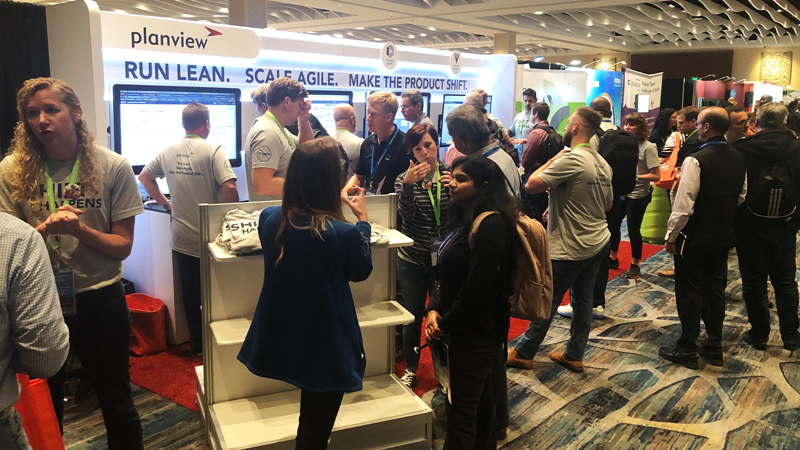
This year’s Global SAFe® Summit was bigger and better than ever. With over 2,000 attendees, great presentations and the release of SAFe® 5.0, I had a tough time figuring out where to focus this blog. Based on the number of sessions on Lean Portfolio Management (LPM) and the conversations I had at the booth around this topic, I thought I would dig in a bit more on LPM.
Last year, the framework creators introduced Lean Portfolio Management. Over the last year, they received feedback, built a class, and are expanding on their learnings. What I realized while at the SAFe Summit, though, is that LPM is very much still in its infancy, so there are still a lot of questions and people are still figuring this out.
I talked to a lot of senior level folks (both transformation consultants and employees) during the conference. Their organizations have followed the SAFe Implementation Roadmap and have Release Trains set up and chugging along (pun intended). Now, they’ve hit a block and are struggling with alignment across the portfolio. They are trying to answer questions like:
- How do we get finance on board to ensure the Agile teams are costed and capitalized correctly?
- How do we fund the Agile teams on the same cadence they are delivering value?
- How do we get visibility across the organization (not just development) to ensure we’re working to deliver against the goals and objectives of the organization (business agility)?
- How do we implement Lean budgeting and governance?
People know what Lean Portfolio Management is supposed to look like in practice. Enterprises see the value in transforming from a project-based to a product-centric (value stream) way of planning and funding, embracing Lean budgeting and governance through Lean Portfolio Management principles. The ultimate goal is business agility, but this isn’t an overnight transformation.
Several years ago, the message was scale Agile – scale beyond a few teams and build more teams. Then, it was create teams of teams and see how those teams can collaborate for better business impact. The awesome part is that we’re at a place now, with Lean Portfolio Management, where the highest level of the organization is starting to shift from slow and cumbersome to fast and nimble. Leaders see the value of delivering incrementally, funding both maintenance and innovation, and providing just enough governance to the Release Trains or value streams to do the highest-priority work first.
I’ll repeat: This isn’t an overnight transformation. For many large organizations, they can’t just flip a switch and be fully Lean and fully Agile overnight. It’s not going to happen. And, even if they could flip a switch, we know that not every single part of the organization can go all Lean or all Agile. Large enterprises today need a hybrid of both project-based and Lean-Agile delivery as they transform—slowly shifting to more Lean-Agile than project-based to keep pace with the market and competitors. Lean Portfolio Management can shepherd in the shift organizations need.
Sounds great, right? Well, the biggest thing I learned at the SAFe Summit is to start small. Put on your Lean and Agile hat as you start to make the actual shift to products (value streams). Think incremental. Get feedback and adjust accordingly. Measure the work done and ensure alignment with the organization’s goals and objectives.
- Understand what Lean Portfolio Management is and think about small ways you can shift current processes in your organization.
- See how Royal Bank of Scotland shifted from 400+ projects a year to 25—allowing their value streams to start work within a week.
- Make sure your Agile Release Trains are optimized to deliver the highest-value work first.
- Find a solution that allows your organization to transform on your terms and timeline and enables non-technical (business) parts of the organization to go along for the ride.
For an organization to reach true business agility, a solid Lean Portfolio Management layer is a must have; without it, the enterprise will only move as fast as your planning and funding, which, quite frankly, defeats the purpose of having Agile teams in the first place.





